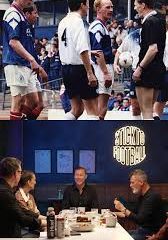East Fife: Updates on the Club’s Recent Performance

Introduction
East Fife Football Club, based in Methil, Fife, holds a rich history in Scottish football, having formed in 1903. The club, known as the ‘Fifers,’ has endeared itself to many fans with its passionate play and community focus. As the current season progresses, East Fife’s performance in League Two has become a topic of interest, reflecting not only the team’s aspirations but also the evolving landscape of football in Scotland.
Recent Performance and Challenges
As of late October 2023, East Fife has been experiencing a rollercoaster season, with mixed results impacting their league standing. Currently, the team sits in the mid-table, battling to secure a position for potential promotion to League One. Recent fixtures have seen both highs and lows — notably, a commendable draw against rivals Stenhousemuir, which highlighted the team’s resilience, followed by a disappointing loss to Elgin City, raising questions about consistency and squad depth.
The management, under head coach Greig McDonald, has been vocal about the team’s potential, focusing on nurturing young talent from their academy while also reinforcing the squad with strategic signings. Key players such as defender Aaron Dunsmore and midfielder Ryan Wallace have been pivotal, providing experience and leadership on the pitch.
Fan Engagement and Community Role
East Fife’s significance extends beyond its on-field performance. The club has been actively engaging with its community, promoting initiatives aimed at youth development and inclusivity in sports. The recent launch of community programmes, including free coaching sessions for children and local charity events, has further solidified East Fife’s place as a beloved institution in Fife.
The fanbase remains steadfast, with matchdays showcasing a vibrant atmosphere that reflects local pride. The club’s social media presence has also been on the rise, with fans encouraged to share their experiences and support through various platforms, enhancing community ties.
Conclusion
In summary, while East Fife experiences challenges in their current league campaign, the club’s commitment to growth and community engagement is unmistakable. With the season still underway, fans remain hopeful for a successful turnaround that could see them not only reach promotional goals but also further entrenched in the community they serve. As East Fife continues to adapt and evolve, the importance of fan loyalty and local support will undoubtedly play a crucial role in shaping the future of this historical football club.









